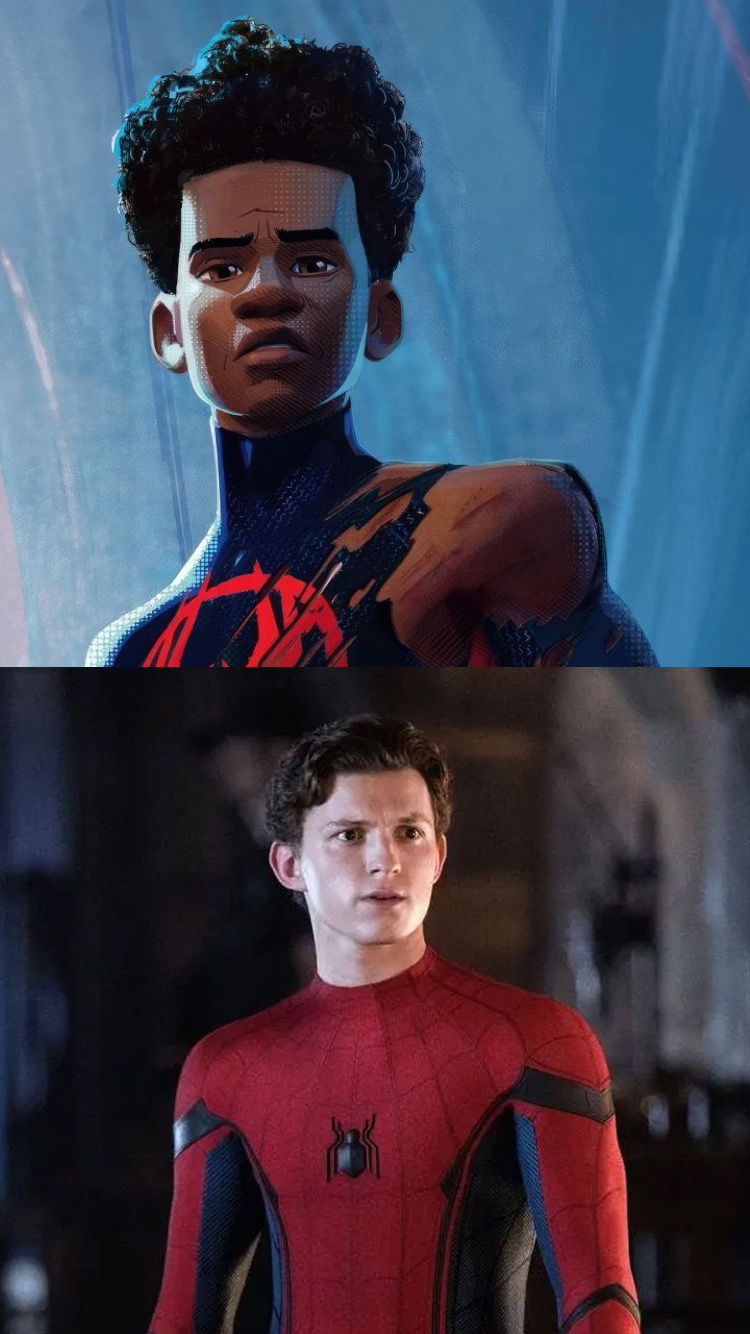Spider-Man, one of Marvel Comics’ iconic characters, has changed a lot since he first appeared. Peter Parker, he showed up in 1962 as a classic American superhero, a white teenager from Queens, New York. Back then, his story reflected what many people saw as the norm; his challenges and victories resonated widely, but they didn’t really touch on issues of race or cultural diversity. Many people could support him as a hero, but not everyone identified with his tale.
In 2011, we got to know Miles Morales, a Brooklyn-based Black and Puerto Rican kid. His appearance signalled a significant shift in superhero narrative. Miles contributed new stories that were diverse and rich in culture. His stories give audiences who had not often seen people that reflected their identity by celebrating Afro-Latino culture through bilingual dialogue and familial bonds.
Although Miles and Peter have similar heroic qualities intellect, responsibility, and a strong moral compass their experiences are shown differently depending on their backgrounds. While Miles provides a distinct viewpoint influenced by his broad cultural background, Peter’s journey frequently centres on the hardships of a white male, perfectly fitting the traditional heroic mould. His interactions with family and his community are deeply intertwined with his identity, providing a vivid glimpse into a different, yet equally compelling, hero’s path.Miles shows us a refined hero navigating the complexities of growing up, cultural identity, and the responsibilities of being Spider-Man, moving beyond typical stereotypes to represent diverse experiences authentically.
By presenting such a diverse character, more individuals can envision themselves as heroes, which builds a strong sense of belonging and empowerment. On the other hand, Peter Parker’s story established a benchmark for heroism that many admire, even if it isn’t entirely relatable to everyone. His narrative focused on themes like responsibility and personal sacrifice traits we can all respect. But Peter’s stories often lack racial and cultural representation, which might make it harder for some viewers to see themselves in his journey. This gap can leave people feeling excluded, reinforcing divides instead of breaking them down.
The introduction of Miles Morales as Spider-Man has made a significant impact on how we view heroes and ourselves. As a Black and Puerto Rican teenager, Miles shows us that heroism can come in all shapes and backgrounds. His story encourages a broader understanding of what it means to be a hero, reaching beyond race and ethnicity. For people from various backgrounds, seeing Miles in action can be uplifting, making them realize that they can be heroes too. This representation can boost self-esteem and inspire positive actions, helping to create a more inclusive society.Miles Morales has been celebrated for bringing much-needed diversity into the superhero world. Many people appreciate how his character reflects the complex nature of society today. The positive response to Miles highlights a shared eagerness for stories that resonate with a wider audience, emphasizing the importance of representation in media. Experts have pointed out that Miles acts as a bridge, connecting classic superhero tales with modern-day conversations about identity and representation.
But there have been some who have criticized Miles’s introduction. His Afro-Latino heritage goes too far from the original Spider-Man persona, according to others, who view it as “forced diversity.” The conflicts that might occur when the media changes are highlighted by this backlash, which exposes continuous discussions about representation and change.
A major shift in media portrayal of Spider-Man may be seen in the move from Peter Parker to Miles Morales.
The introduction of Miles Morales as Spider-Man has sparked vital discussions about representation in media, inspiring support for marginalized communities and challenging stereotypes. His character bridges traditional superhero tales with modern issues of identity and representation, enriching the diversity of superhero storytelling. As media evolves, characters like Miles play a crucial role in shaping a cultural landscape that celebrates diversity and fosters empathy across communities. This shift in superhero narratives not only reflects societal progress but also actively contributes to building a more inclusive and accepting culture.
REFERENCES
Molina-Guzmán, Isabel. “11. Into the Spider-Verse and the Commodified (Re)imagining of Afro-Rican Visibility” In Mixed-Race Superheroes edited by Sika A. Dagbovie-Mullins and Eric L. Berlatsky, 220-242. Ithaca, NY: Rutgers University Press, 2021. https://doi.org/10.36019/9781978814639-012
Marie Mills, Regina. 2022. “A Post-Soul Spider-Man: The Remixed Heroics of Miles Morales.” The Black Scholar 52 (1): 41–52. doi:10.1080/00064246.2022.2007345.
Montes, Brian. “Fourteen. The Paradox of Miles Morales: Social Gatekeeping and the Browning of America’s Spider-Man.” In Graphic Borders: Latino Comic Books Past, Present, and Future, pp. 269-280. University of Texas Press, 2016.
Gonzalez, Anika. “Into the Spider-Verse: Cultural Identity in Spider-Man Media.” (2023).
Summers, Sam. “Adapting a Retro Comic Aesthetic with Spider-Man: Into the Spider-Verse.” (2019): 190-194.


Khagenda Giri
Yunisha you did a great job by showing how Spider-Man has changed from Peter Parker to Miles Morales, making superhero stories more diverse. Your analysis clearly explains how Miles brings Afro-Latino identity into the spotlight, which is an important point. However, it focuses too much on their differences and doesn’t fully explore what they have in common. Both Peter and Miles struggle to balance their personal lives with being heroes, but this is only mentioned briefly. Looking deeper into their shared challenges would make the argument even stronger.
The critique of Peter Parker’s “lack of inclusivity” feels a bit unfair. Sure, his story doesn’t dive into racial identity, but that doesn’t mean it doesn’t hit home for a lot of people. Struggles with family, money, self-doubt? Those are universal. So just calling it out for not being diverse kinda ignores why people connect with Peter in the first place. The use of scholarly sources is commendable, as it incorporates academic discussions on race and superhero identity. However, your analysis primarily uses these sources to support its claims rather than critically engaging with counterarguments, such as the “backlash” against Miles Morales. Additionally, the role of the images is little unclear, if they visually reinforce the argument, a stronger connection should be made.
Overall, it is a Strong argument, great sources, but a bit one-sided. Add a little more balance, explore their similarities more, and tie those images in tighter, and this would be an even stronger take.